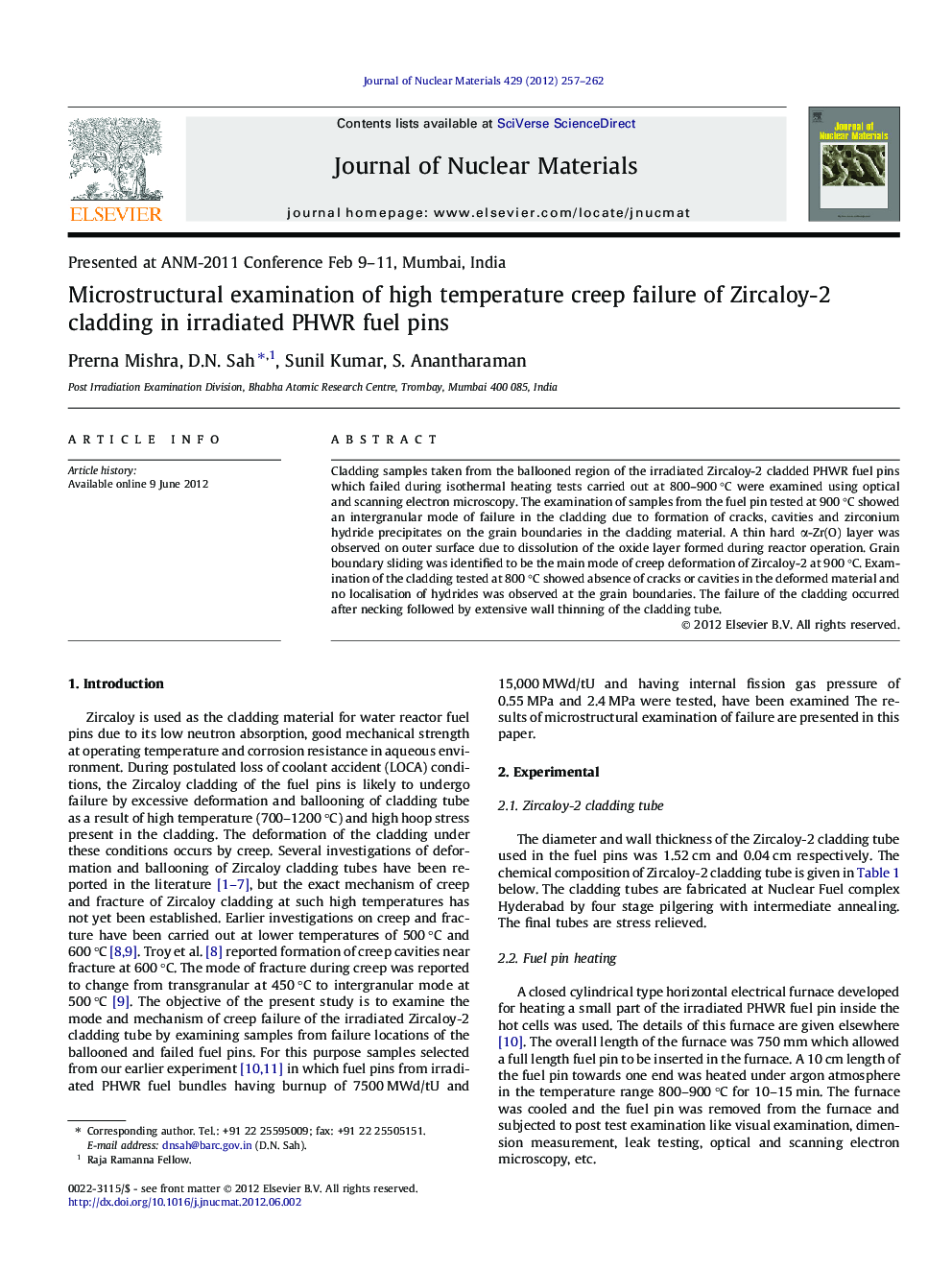| Article ID | Journal | Published Year | Pages | File Type |
|---|---|---|---|---|
| 1566138 | Journal of Nuclear Materials | 2012 | 6 Pages |
Abstract
Cladding samples taken from the ballooned region of the irradiated Zircaloy-2 cladded PHWR fuel pins which failed during isothermal heating tests carried out at 800-900 °C were examined using optical and scanning electron microscopy. The examination of samples from the fuel pin tested at 900 °C showed an intergranular mode of failure in the cladding due to formation of cracks, cavities and zirconium hydride precipitates on the grain boundaries in the cladding material. A thin hard α-Zr(O) layer was observed on outer surface due to dissolution of the oxide layer formed during reactor operation. Grain boundary sliding was identified to be the main mode of creep deformation of Zircaloy-2 at 900 °C. Examination of the cladding tested at 800 °C showed absence of cracks or cavities in the deformed material and no localisation of hydrides was observed at the grain boundaries. The failure of the cladding occurred after necking followed by extensive wall thinning of the cladding tube.
Related Topics
Physical Sciences and Engineering
Energy
Nuclear Energy and Engineering
Authors
Prerna Mishra, D.N. Sah, Sunil Kumar, S. Anantharaman,
